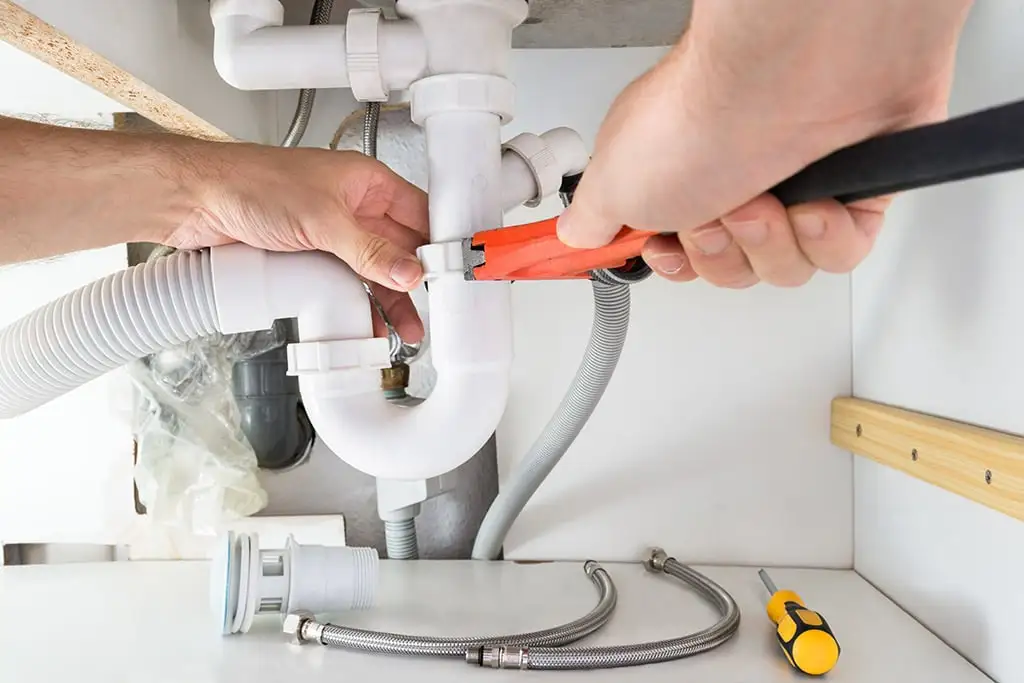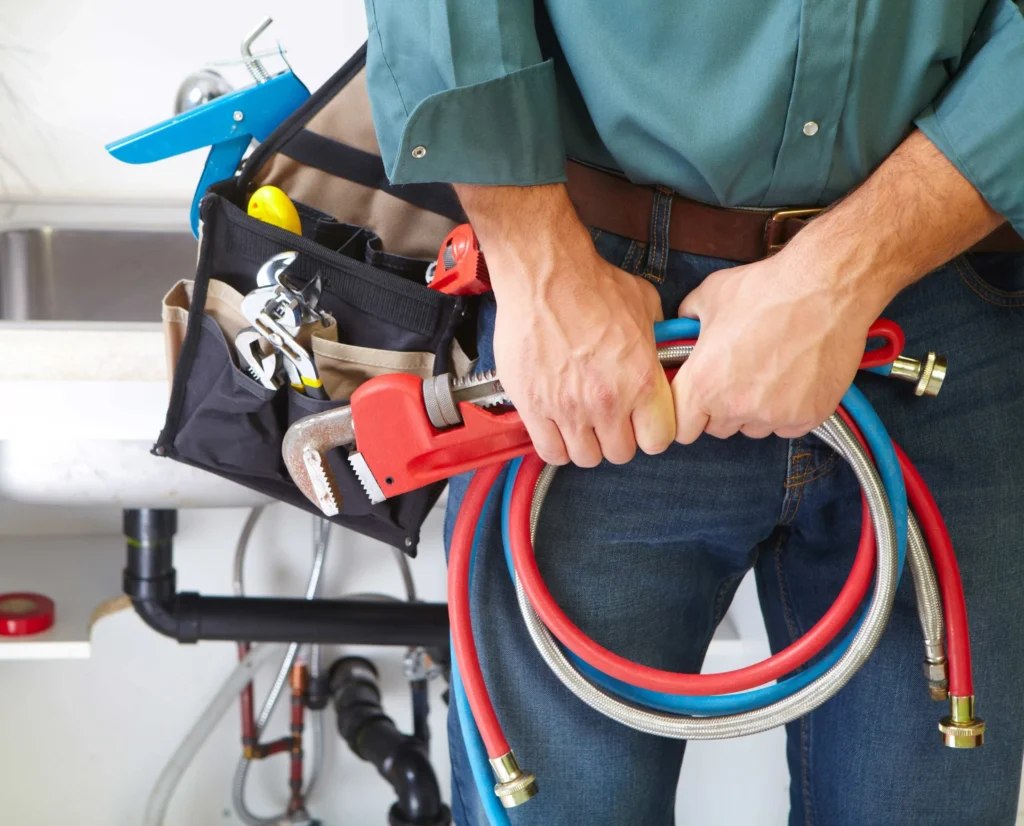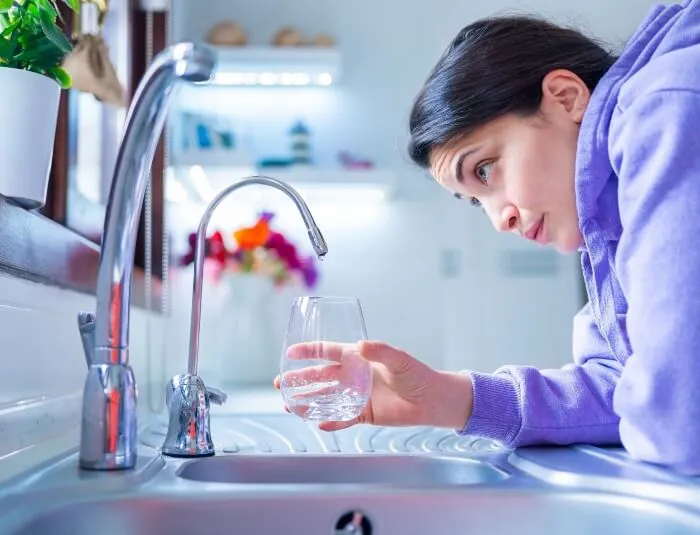

When Mark noticed that his morning shower had turned into a slow drizzle and the kitchen faucet barely filled a glass, he knew he was dealing with low water pressure in the house. He checked every faucet inside and outside but the low water pressure was consistent across the board, not just limited to the kitchen sink or bathroom. Hoping for a simple fix, Mark cleaned the aerators on his faucets and showerhead, but the low water pressure in the shower remained unchanged. That’s when he decided it was time to call in a plumber for low water pressure issues Fast Plumbing and Drain.
The experienced low water pressure plumber arrived promptly and began by checking the water pressure at the main line using a professional gauge. The reading confirmed that the water pressure was low throughout the home, well below the recommended range. After a detailed inspection, the plumber discovered the root cause: years of mineral buildup and corrosion in the home’s old galvanized pipes were severely restricting flow something all too common in older properties.
The plumber explained that to fix the low water pressure in the home, the corroded pipe sections would need to be replaced. Mark agreed, and the plumber carefully removed the deteriorated piping and installed brand-new copper lines. The results were immediate when Mark turned on his taps, a strong and steady water stream greeted him in every room, from the kitchen sink to the bathroom. Thanks to the expertise of a plumber who specializes in low water pressure problems, Mark no longer had to deal with weak flows or worry about hidden plumbing issues. Whether you’re struggling with low water pressure in your bathroom sink, kitchen, or throughout the house, professional help can make all the difference.
Low water pressure may seem like a hopeless problem, but there are still ways a homeowner can address and sometimes fix the causes of low water pressure by following these practical steps:
Ensure the main shut-off valve and any other inline valves (such as those near the meter or on branch lines) are fully open. If a valve is partially closed, it will restrict water flow and reduce pressure.
Look for visible leaks in exposed pipes and around the property. Leaks not only waste water but also reduce overall pressure.
Mineral deposits and debris can clog aerators and showerheads, reducing flow at individual fixtures. Unscrew them, soak in vinegar, and scrub away buildup before reinstalling.
Many homes have a pressure regulator (often near the main shut-off valve). If it’s malfunctioning or set too low, it causing low pressure. You can try adjusting it, but if pressure remains low, the regulator may need to be replaced by a professional.
Sometimes, debris or buildup in the water meter or water softener can restrict flow. Check and clean any accessible screens or bypass the softener temporarily to see if pressure improves.
Contact your water supplier to see if there’s a known issue in your area, such as main breaks or maintenance work, which can temporarily lower pressure.
Running multiple water-using appliances at once can reduce pressure. Try to stagger usage throughout the day.
It’s time to contact Fast Plumbing and Drain when you encounter:
If every faucet and fixture in your home has low water pressure, it indicates a deeper plumbing issue such as clogged or corroded pipes, a malfunctioning pressure regulator, or a hidden leak.
If you’ve checked for simple issues (like closed valves or clogged aerators) and the problem persists, or if you’re unable to pinpoint the cause, it’s time to call a plumber.
If you notice water stains, damp spots, or suspect hidden leaks, a plumber can conduct a thorough inspection to find and repair leaks before causing significant damage.
Fluctuating or suddenly low water pressure, especially when not related to simultaneous use of multiple fixtures, signals a serious problem in your plumbing system that needs professional attention.
Older homes with galvanized pipes are especially prone to corrosion and buildup, which can severely restrict water flow and require pipe replacement.
Malfunctioning pressure regulators or sediment buildup in water heaters can cause widespread low pressure.
If cleaning aerators, checking valves, and other basic troubleshooting steps don’t restore normal pressure, a plumber’s assessment is needed.
We employ a systematic approach and specialized tools to identify the cause and resolve low water pressure, ensuring a thorough and lasting fix. Here’s how the process typically works:
Our plumber begins by determining if the low water pressure is isolated to one fixture or affects the entire house. They check all faucets, showerheads, and other water outlets for signs of wear, clogging, or damage.
Our plumber will inspect the main shut-off valve and any branch valves to ensure they are fully open. A partially closed valve is a common cause of low pressure. They also check the pressure regulator (if present) for malfunction, using a pressure gauge to measure water pressure at various points in the system.
The plumber checks for leaks by turning off all water-using appliances and fixtures and monitoring the water meter for movement. Unexplained increases in water usage or visible signs like damp spots, puddles, or soggy areas in the yard indicates hidden leaks in the plumbing or supply line.
If the problem is widespread or not resolved by previous steps, the plumber inspects the pipes for blockages, corrosion, or deterioration—especially in older homes with galvanized steel pipes. Pipe blockages from mineral buildup or debris restrict flow and require cleaning or replacement.
If the issue persists, the plumber may check with neighbors or the local water utility to rule out municipal water supply problems. If the entire neighborhood is affected, the issue may be outside the homeowner’s plumbing system.
Based on the findings, the plumber carries out the necessary repairs, which can be: Cleaning or replacing clogged aerators, showerheads, or fixtures; Fully opening or replacing faulty valves; Replacing or adjusting a malfunctioning pressure regulator; and Repairing leaks or replacing deteriorated pipes.
After repairs, the plumber tests water pressure throughout the home to confirm the issue is resolved and ensures all fixtures function properly.
Fast Plumbing and Drain’s step-by-step approach ensures the root cause is accurately identified and the correct solution is implemented, restoring optimal water pressure in the home.



We ensure quality service, offer guarantees, and provide ongoing support. Here’s what we do:
We provide a warranty on our workmanship. If there are installation errors or faulty work, it will be corrected.
We install reliable, energy-efficient plumbing components from reputable brands. We use manufacturer-approved parts to ensure longevity and performance.
We ensure the equipment is installed to the manufacture’s specifications, preserving the warranty.
We test the system post-installation to confirm proper operation. We then check for issues and seals before completing the job.
We provide customers a detailed invoice outlining the work performed, parts used, and warranty terms.
We encourage customers to enroll in our preventative maintenance plan for ongoing tune-ups and priority service.
We check in with customers after installation or repair to ensure satisfaction. We also offer 24/7 emergency support in case of urgent issues.
We stay up to date with state plumbing licensing through the Washington State Department of Labor & Industries and the Uniform Plumbing Code, and ongoing training.
By backing up our customers, we provide peace of mind and ensure long-term satisfaction with our work.
We’re a second-generation business with over 40 years of on-the-job experience. Our deep knowledge means we diagnose and solve problems faster, saving you time and money.
No hidden fees or surprise upcharges. The price we quote is the price you pay.
We offer warranties that protect your plumbing system —1 year on parts and 3 years on labor for new installations.
We go the extra mile to ensure no dings on your walls or scratches on your floors during repairs.
All our plumbers undergo criminal background checks and drug tests, so you can feel confident in who’s in your home.
We believe in offering pricing that reflects real value—ensuring you get the plumbing service you need without having to overpay.


If the water pressure is low in the house, it could be due to partially closed shut-off valves, aging or corroded pipes, leaks, or a faulty pressure regulator. A plumber for low water pressure can diagnose and resolve the issue efficiently.
Low water pressure in the shower is often caused by mineral buildup in the showerhead, pipe corrosion, or a malfunctioning pressure regulator. If cleaning the showerhead doesn’t help, call a low water pressure plumber to inspect your system.
To fix low water pressure in the house, check that all valves are fully open, clean aerators, inspect for leaks, and test your pressure regulator. If these steps don’t solve the problem, contact a professional plumber for low water pressure.
Common culprits include old galvanized pipes, debris in plumbing lines, faulty fixtures, or municipal water supply issues. If low water pressure in your home persists, it’s best to call in an expert for a thorough assessment.
Start by cleaning the showerhead to remove any mineral buildup. If the water pressure is still low in the shower, the issue could be deeper in the plumbing. A licensed low water pressure plumber can help restore proper flow.
If you’re experiencing low water pressure in the kitchen sink, it may be due to a clogged aerator, partially closed valve, or pipe blockage. Try cleaning the aerator, and if that doesn’t help, a plumber for low water pressure can take a look.
Low water pressure in the bathroom sink often stems from a clogged aerator or debris in the faucet lines. If cleaning doesn’t work, there might be an underlying plumbing issue that a low water pressure plumber can address.
Yes! A plumber for low water pressure uses tools like pressure gauges, leak detection equipment, and video pipe inspection to identify the cause and provide long-term solutions such as pipe replacement or valve repairs.
The most common causes include corroded pipes, leaking water lines, closed valves, or clogged aerators. If you’re asking, “What causes low water pressure?” and haven’t found the answer, a professional plumber can help.
While not dangerous, low water pressure in your home can be a sign of serious plumbing problems, like leaks or pipe deterioration. Ignoring the issue could lead to more costly damage.
Sudden drops may occur due to broken pipes, failing pressure regulators, or main line issues. If the water pressure is low without explanation, don’t wait—have a low water pressure plumber inspect it.
A low water pressure plumber uses pressure gauges, leak detectors, and visual inspections to determine whether the issue stems from corroded pipes, regulator failure, or supply line problems.
If you’ve ruled out clogged aerators and open valves but still experience low water pressure in the house, it’s time to call a professional plumber. They can identify hidden issues that homeowners often miss.
Yes. In older homes with galvanized pipes, corrosion and buildup restrict flow. Replacing them with copper or PEX piping is a reliable way to fix low water pressure in your home long-term.
Sometimes. You can clean aerators, check valves, and test your pressure regulator. But if low water pressure persists or affects the entire house, hiring a plumber for low water pressure is the safest and most effective option.
Let’s bring your vision to life with expert craftsmanship and thoughtful design.
16120 Woodinville Redmond Rd NE STE. 15
Woodinville, WA 98072
(425) 629-9564
hello@fastwaterheater.com
Monday – Friday 7:30am-5pm
24/7 Emergency Service Available
Construction
FASTWWH948BC
Plumbing
FASTWWH79901